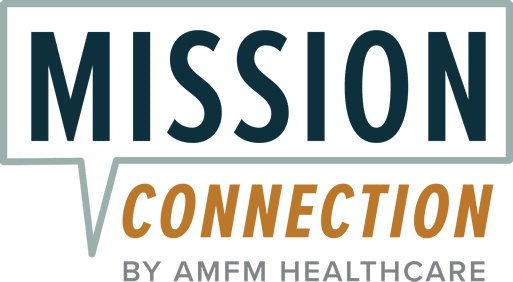Mood disorders are a category of mental health conditions where a person’s emotional state is consistently disturbed, often leading to significant distress or impairment. These disorders can affect mood, energy, thinking patterns, and daily functioning. In this article, we’ll discuss the types of mood disorders, their symptoms, and the most common treatment options.
What Are Mood Disorders?
A mood disorder involves ongoing disturbances in a person’s emotional state. These disruptions can range from feelings of deep sadness to episodes of extreme elation or irritability. According to the National Institute of Mental Health, about 9.7% of U.S. adults experience some form of a mood disorder in a given year. The types of mood disorders are varied, and each has its unique signs, causes, and treatment options.
Types of Mood Disorders
There are several recognized types of mood disorders, but the most common include:
1. Major Depressive Disorder (MDD)
This is one of the most common types of mood disorders, characterized by persistent sadness or lack of interest in most activities. Symptoms include fatigue, sleep disturbances, changes in appetite, feelings of guilt or worthlessness, and thoughts of death or suicide. Depression affects around 7% of U.S. adults annually. Untreated, it can become chronic and severely impair a person’s ability to function.
2. Bipolar Disorder
Bipolar disorder involves mood swings between periods of extreme happiness (mania or hypomania) and deep depression. There are two main subtypes:
- Bipolar I: This involves at least one manic episode, which can lead to dangerous behaviors and may require hospitalization.
- Bipolar II: A person experiences hypomanic episodes, which are less severe but still disrupt daily life, along with depressive episodes.
Bipolar disorder affects about 2.8% of U.S. adults and can significantly impact a person’s quality of life.
3. Cyclothymic Disorder
This is a milder form of bipolar disorder, where a person experiences frequent mood swings, but the highs and lows aren’t as severe as in bipolar I or II. Cyclothymia often goes undiagnosed, but its chronic nature can still interfere with relationships, work, and overall well-being.
4. Persistent Depressive Disorder (Dysthymia)
This is a long-term form of depression where symptoms may not be as severe as major depression but are chronic, lasting for two years or more. People with dysthymia often feel hopeless and may experience low self-esteem, fatigue, and difficulty concentrating.
5. Seasonal Affective Disorder (SAD)
SAD is a type of depression that occurs at the same time each year, usually during the winter months when sunlight is limited. Symptoms include fatigue, depression, and social withdrawal. It is believed that reduced sunlight affects serotonin levels, contributing to mood changes.
6. Disruptive Mood Dysregulation Disorder (DMDD)
This diagnosis applies to children and adolescents who have severe and chronic irritability with frequent outbursts of temper. DMDD was added to the DSM-5 to address mood issues in younger populations.
Symptoms of Mood Disorders
While each type of mood disorder has its specific symptoms, common signs include:
- Prolonged depressive or irritable moods
- Feelings of guilt or unworthiness
- Loss of enthusiasm for previously enjoyed activities
- Suicidal or fatalistic ideas
- Exhaustion and low vitality
- inability to focus or make decisions
- Changes in sleep habits (insomnia or excessive sleeping)
- Alterations in weight or appetite
Mood disorders can severely affect daily life, making it difficult to function in personal, professional, or social settings. Symptoms often persist over time and interfere with relationships, work, and overall health.
Causes of Mood Disorders
The exact cause of mood disorders is unknown, but several factors contribute:
- Genetics: Mood disorders often run in families, suggesting a genetic link.
- Biological Factors: Abnormalities in brain chemicals such as serotonin and dopamine, as well as changes in brain structures like the amygdala, are associated with mood disorders.
- Environmental Factors: Stressful life events, trauma, chronic illness, or substance abuse can trigger mood disorders.
- Medical Conditions: Some mood disorders are related to underlying health issues like thyroid problems, neurological conditions, or hormonal imbalances.
Diagnosis of Mood Disorders
Diagnosis involves a thorough evaluation by a healthcare professional, who will consider a patient’s medical history, family history, and symptoms. Doctors often use the Diagnostic and Statistical Manual of Mental Disorders (DSM-5) to categorize symptoms and determine whether they meet the criteria for a specific mood disorder. A physical examination may also be conducted to rule out medical conditions that could mimic or contribute to mood disturbances.
Treatment Options for Mood Disorders
Treatment for mood disorders typically involves a combination of medication, psychotherapy, and lifestyle changes. Here’s a breakdown of the most common treatments:
1. Medications
- Antidepressants: These are commonly prescribed for depression and some anxiety disorders. Common types include selective serotonin reuptake inhibitors (SSRIs) and serotonin-norepinephrine reuptake inhibitors (SNRIs).
- Mood Stabilizers: These are often used for bipolar disorder to control mood swings and prevent manic or depressive episodes. Lithium is a widely used mood stabilizer.
- Antipsychotics: Sometimes prescribed for severe cases of bipolar disorder, especially during manic episodes.
2. Psychotherapy
Also known as “talk therapy,” psychotherapy is a crucial component of treatment. Cognitive Behavioral Therapy (CBT) is particularly effective for many types of mood disorders. It helps patients understand and change negative thought patterns that contribute to their mood issues.
3. Brain Stimulation Therapies
In severe cases where other treatments haven’t worked, doctors may recommend therapies like electroconvulsive therapy (ECT) or transcranial magnetic stimulation (TMS). These methods aim to alter brain activity to improve mood and relieve symptoms.
4. Lifestyle Changes
Regular physical activity, a healthy diet, consistent sleep patterns, and mindfulness practices can all help manage mood disorders. Studies have shown that exercise, in particular, can boost mood by increasing the brain’s production of endorphins.
Conclusion
Mood disorders are complex conditions that require proper diagnosis and treatment to manage effectively. Understanding the different types of mood disorders, from major depression to bipolar disorder, helps shed light on the varied experiences people may have with their mental health. If you or someone you know shows signs of a mood disorder, it is crucial to seek professional help early, as these conditions can worsen over time if left untreated. Treatment often improves symptoms and helps restore quality of life.
Contact Mission Connection Healthcare for expert guidance on mood disorder management.




